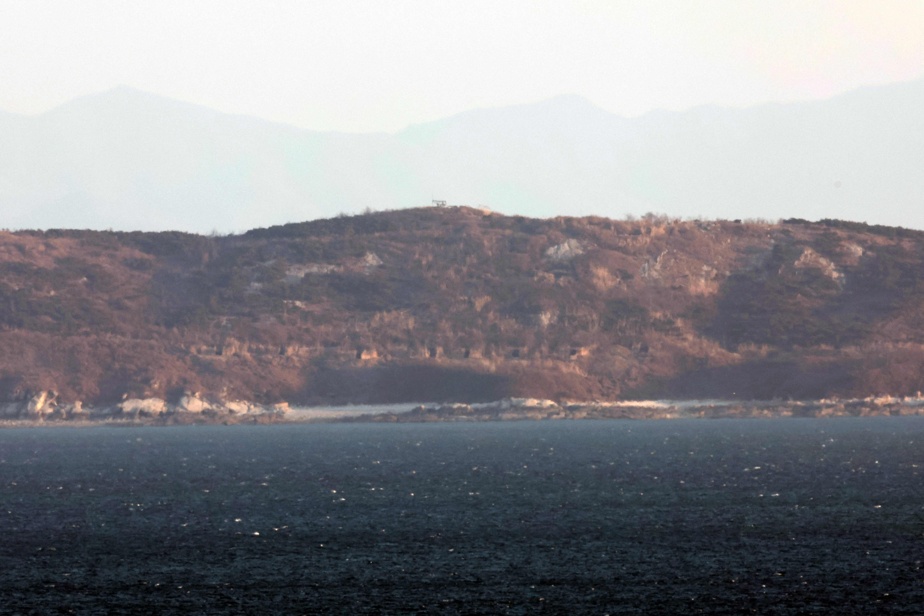(Seoul) North Korea carried out on Sunday for the third day in a row, according to Seoul, artillery exercises with live ammunition on its western coast, near South Korean islands whose civilian population has been called to take shelter.
The South Korean military said the North carried out “artillery fire with more than 90 shells north of Yeonpyeong Island from 4 p.m. to 5:10 p.m.” on Sunday, or from 4 a.m. to 12:10 a.m. (Eastern Time).
“We strongly warn against North Korea’s repeated artillery fire in the area where hostile acts are prohibited, which threatens peace on the Korean Peninsula and escalates tensions,” the South’s military said. Korean, demanding “that this stop immediately”.
No North Korean shells fell south of the “Northern Limit Line” (NLL), the de facto maritime border in the Yellow Sea, and no casualties were reported, according to South Korea’s Yonhap news agency.
Local authorities in Yeonpyeong told AFP they had warned residents to stay at home as a precaution.
On Friday and Saturday, North Korean shots had already targeted the same region, one of the buffer zones created by a 2018 agreement which lapsed in November after Pyongyang launched a spy satellite.
On Friday, residents of Yeonpyeong and neighboring Baengnyeong Island had already been ordered to evacuate to shelters due to North Korean artillery fire in the surrounding waters. More than 200 shells had been fired, according to Seoul, whose army responded with a live ammunition exercise a few hours later in Yeonpyeong.
“Decoy”
Pyongyang claimed that its launches constituted “a natural response and countermeasure” to the exercises carried out by Seoul, Washington and Tokyo in the region, according to the official KCNA agency.
On Saturday, the South Korean military announced that the North had fired 60 shells near Yongpyeong. North Korea, however, provided another version.
According to Kim Yo Jong, the powerful sister of North Korean leader Kim Jong-un, these were explosive charges simulating the sound of a cannon, which North Korean forces detonated to test the South Korean reaction.

KCNA PHOTO VIA ARCHIVES ASSOCIATED PRESS
Kim Yo Jong, the powerful sister of North Korean leader Kim Jong-un
“Our army did not fire a single shell into the water,” Kim Yo Jong said in a statement broadcast by KCNA on Sunday.
“The rogue ROK military took the lure we set,” she said. Before ironically: “in the future, they will even mistake the rumble of thunder in the northern sky for artillery fire.”
Seoul did not immediately react to this assertion.
“Confrontation phase”
This escalation in the Yellow Sea is one of the most serious since 2010, when the North bombed Yeonpyeong, killing four people, including two civilians. It comes after a volley of bellicose statements from North Korean leader Kim Jong-un who has threatened in recent days to “annihilate” South Korea and the United States.
The island of Yeonpyeong, approximately 2,000 inhabitants, is located 115 km west of Seoul and around ten kilometers south of the North Korean coast. Also very close to North Korea, Baengnyeong, 4900 inhabitants, is 210 km from Seoul.
The two Koreas are still technically at war since the end of the conflict in 1953 which ended with an armistice and not a peace treaty. For more than 70 years, the peninsula has experienced alternating periods of heightened tensions and relative relaxation.
Their relationship is currently at its lowest point in decades.
North Korea “has entered a phase of military confrontation,” Cho Han-bum, a researcher at the Korea Institute for National Unification, told AFP.
She “will not engage in explicit provocations as she did in Yeonpyeong but will continue to aggravate military tensions” while holding the South responsible.
Last year, North Korea enshrined its status as a nuclear power in its constitution and fired several intercontinental ballistic missiles, in violation of UN resolutions.
At the end of December, Kim Jong-un ordered the acceleration of military preparations for a “war” that could “be launched at any time”.
He also ruled out any reconciliation with the South, emphasizing the “persistent and uncontrollable crisis situation” triggered according to him by Seoul and Washington with their joint military exercises in the region.
